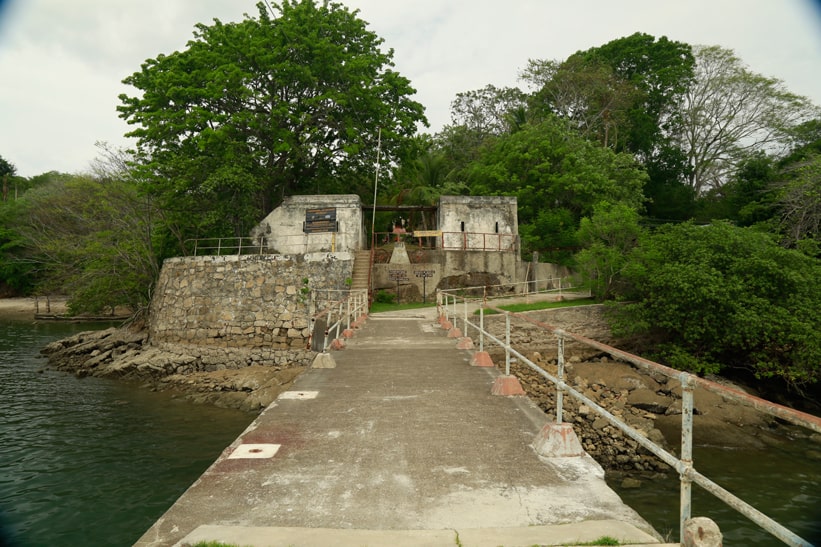Few things on earth manage to surprise the masses nowadays, but a Costa Rican prison once described as “hell on earth” making the transition to the country’s 30th national park certainly fits the bill.
Like another famous prison island, Alcatraz, tourists who are fascinated by locations with a dark but curious history will surely want to add this bio-diverse tropical paradise to their future travel plans.
In fact, as of 2021, San Lucas Island and the Golden Gate National Recreation area became sister parks via an agreement between SINAC and US National Parks Service
Since August 24, 2020, in the wake of Costa Rica’s 50th anniversary of the creation of their national parks system, San Lucas Island has enjoyed its newfound status as a national park. From its operation as one of the most notorious Costa Rican prisons in 1873, San Lucas Island has had quite the journey to its current designation.
To appreciate the true beauty of the present destination, we must first take a brief trip to the infamous past that is responsible for the island’s notoriety.
History of San Lucas Island
Prison (1873-1991)
While indigenous inhabitants have lived on Isla San Lucas and the surrounding islands for centuries, San Lucas mainly gains its reputation from the penitentiary that was established by President Tomas Guardia in 1873.
Not long after it began operation, the San Lucas Island began to earn its reputation as one of the harshest prisons in the world, with reports of inhumane conditions, torture, and even murder surfacing regularly. In some cases, inmates were subjected to inhumane practices such as being put in deep pits of lime and sewage for days on end. In short, inmates who were sentenced to the facility viewed it as a death sentence.
The prison was home to medium- and high-level offenders. It housed some of Costa Rica’s most dangerous and notorious criminals, including Beltran Cortez Carvajal and Jose Leon Sanchez. The latter was condemned and sentenced to San Lucas Island for the theft of the Virgin of Los Angeles in 1950, a crime which he did not commit.
While in prison, he began chronicling his life and treatment during his tenure at San Lucas. Upon his release in 1970 (book originally published in 1968), Sanchez found success with his book titled The Lonely Men’s Island (La Isle De Hombres Solos), which was wildly popular in Central America and Costa Rica in particular. Sanchez went on to write several other successful works including Tenochtitlan, The Last Battle of the Aztecs, and Bells to Call the Wind.
The prison features graffiti made by inmates that depicts the harsh life within the prison system among other lewd images, which can still be viewed today.
Despite the harsh conditions, the prison remained active until 1958 when it was turned into an agricultural penal colony. Although the penal colony persisted in its tough reputation, it abandoned some of its more controversial practices.
Wildlife refuge (2001-2020)
After its time as an agricultural penal colony, the island was largely ignored and spent a decade in a state of decay. Then, in 2002, the island was designated as a wildlife refuge. In 2012, Costa Rican tourism authorities took over the maintenance of the park and began to develop it into the biological wonderland of a tourist attraction that it is today. Upgrades included the creation of new trails and the addition of sanitary facilities.
Located in the Gulf of Nicoya off the coast of Costa Rica, the island boasts a multitude of plants and animals that are unique to the island.
Indigenous populations of pheasant, turkey, anteaters, deer, snakes, spiders, crocodiles, and even howler monkeys maintain healthy numbers on the island even to this day. Off the coastline, the island waters are home to many species of fish, sharks, sea turtles, and rays.
Also present on the site are eight known archeological sites, now designated and protected as areas of cultural heritage. Discovered in the 1970s, the archeological sites are believed to be dated from somewhere between 1,000–1,500 AD.
How to Visit San Lucas Island
San Lucas Island is located about 6 km away from the port city of Puntarenas, about 90 km away from the capital city of San Jose. From Puntarenas, it is a short 40 minute boat ride to the island.
The island is about 1,156 acres or 4.6 km squared, so you will never suffer from the boredom of staying in the same location for hours on end.
Several guided tours are offered, and are fairly inexpensive considering the location and spectacular views that the island has to offer (usually around $80-$110 per person). These tours will take walk you through the island, allowing you to view the rich heritage that the island has to offer including the prison, churches, and buildings of the past that have long since been abandoned. You are even allowed to view the prisons torcher chambers, the very chambers where prisoners were subjected to unspeakable and heinous punishments during the previous century. Tours usually last around 4-6 hours, and you’ll be able to enjoy the unique flora and fauna that are unique to the island every step of the way.
Your hired tour guide will also provide you with interesting information about each particular point of interest, as nearly every building and establishment has some sort of curious history behind it.
After the tour, you are permitted to walk on the hiking trails and visit some of the 19 beautiful sandy beaches that surround San Lucas Island. Food and refreshments are also almost universally provided by all tour groups, so no need to pack your cooler!
Come visit San Lucas Island, learn about the rich history, and see for yourself what this beautiful area has to offer.
Before visiting, make sure to check Covid-19 travel guidelines for your particular state or country to ensure smooth sailing on your next vacation.







